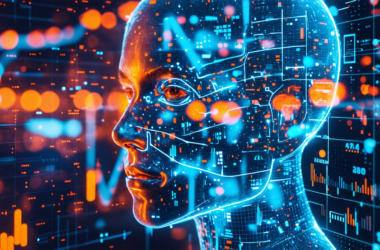Table of Contents Show
Microsoft and OpenAI have long had a complex, codependent relationship that always makes me want to sing Avril Lavigne (“Why’d ya have to go and make things so complicated?”).
It all began with Microsoft’s $1 billion investment in OpenAI in 2019 and ramped up with its $10 billion commitment in 2023, much of which is in the form of cloud compute purchases instead of cash. In exchange, Microsoft got the right to reuse OpenAI’s models and became a minority holder specifically in the profit-making part of OpenAI’s business which, in turn, is “legally bound to pursue the Nonprofit’s mission.”
That arrangement gives OpenAI some unusual powers. According to OpenAI, its nonprofit board will determine when the company has “attained AGI,” or artificial general intelligence—the point at which AI finally outperforms humans at “economically valuable work.” Once the board decides AGI has been reached, such a system will be “excluded from IP licenses and other commercial terms with Microsoft.” Translation: Once OpenAI achieves its stated mission of reaching AGI, Microsoft will presumably not have access to or be able to profit from OpenAI’s AGI-level technology.
Issues around OpenAI’s nonprofit board came to a head when it suddenly fired CEO Sam Altman—and then quickly reinstated him—in November 2023. Before his ouster, Altman said he and Microsoft CEO Satya Nadella were “nowhere near the frenemy territory,” saying the relationship was “really good.”
But recent developments leave me wondering whether the Big Tech behemoth and the $80 billion startup are becoming full-on frenemies. After all, Nadella was blindsided by Altman’s ouster, learning of it just minutes before the rest of the world. And on a joint episode of the Pivot and On with Kara Swisher podcasts during the Altman drama, he said, “One thing, I’ll be very, very clear, is we’re never going to get back into a situation where we get surprised like this, ever again.… That’s done.”
These days, Microsoft is clearly hedging its bets: Less than two months ago, Microsoft announced it was forming a new organization, called Microsoft AI, with Mustafa Suleyman, founder of DeepMind and cofounder of Inflection AI, as its CEO. Microsoft also paid $650 million for the rights to Inflection’s intellectual property. And yesterday, The Information reported that Microsoft is readying a new, massive, state-of-the-art AI model to compete with OpenAI (as well as Google and Anthropic). The new model, internally referred to as MAI-1, is being overseen by Suleyman.
Meanwhile, OpenAI’s Altman appears less focused on the part of the business that benefits Microsoft, and more on the company’s relentless pursuit to reach AGI. Addressing students at Stanford University last week, he honed in on his belief that any cost in support of that mission is justified.
“There is probably some more business-minded person than me at OpenAI somewhere worried about how much we’re spending, but I kinda don’t,” he said. “Whether we burn $500 million a year or $5 billion—or $50 billion a year—I don’t care, I genuinely don’t,” he continued. “As long as we can figure out a way to pay the bills, we’re making AGI. It’s going to be expensive.”
Whether Microsoft will keep investing in OpenAI towards that mega-cost, ill-defined mission remains to be seen. After all, according to an internal email released last week as part of the ongoing U.S. Justice Department antitrust case against Google, Microsoft initially invested in OpenAI in 2019 because it was “very worried” that Google was years ahead in scaling up its AI efforts.
“We are multiple years behind the competition in terms of machine learning scale,” Microsoft’s CTO Kevin Scott wrote in the 2019 email to Nadella and Microsoft founder Bill Gates.
Now, of course, Microsoft is seen as a clear AI leader. Nadella, for his part, appears to be shrewd at playing a multidimensional chess game meant to make sure the company does not fall behind again in AI. At the same time, the OpenAI drama continues: OpenAI is said to be planning the release of an AI-powered search product similar to Perplexity and competitive with Google. But just this morning, The Information reported that OpenAI may postpone an event where its leaders were expected to share updates and show product demonstrations—though it is unclear what the event was about.
So, are Microsoft and OpenAI full-on frenemies at this point? Or will the Nadella-Altman bromance continue? As recently as January, the two showed a united front in a discussion at Davos about their partnership. But either way, it looks like Microsoft isn’t taking any chances.
With that, here’s the AI news.
Sharon Goldman
sharon.goldman@fortune.com
@sharongoldman
AI IN THE NEWS
Microsoft-backed Wayve raises $1 billion for its AI-powered self-driving technology. London-based self-driving startup Wayve announced a massive $1.05 billion Series C investment round today, led by SoftBank and including new investor Nvidia and existing investor Microsoft. Founded in 2017, Wayve was the first to develop and test a fully autonomous driving system powered by deep learning on public roads. Today, the company said that it’s building foundation models for autonomous driving, similar to a ‘GPT for driving.’
Met Gala taps custom OpenAI chatbot. Chatbots are certainly showing up everywhere—but do they really need to be at the Met Gala? Still, the Wall Street Journal reported yesterday that this year’s exhibition featured a custom chatbot installation powered by GPT-4 associated with a wedding gown from the 1930s once worn by New York socialite Natalie Potter. The chatbot answered visitor questions about her life and dress, in the persona of Potter.
Apple is reportedly getting into the AI chip business. According to the Wall Street Journal, Apple has been working on developing its own chip designed to run AI software in data centers. Humorously called Project ACDC (AI Chip Data Center), the effort has apparently been in the works for several years—building on Apple’s longtime efforts to build chips for iPhones, iPads, Apple Watch, and Mac computers. There is no word whether the new chip will be part of Apple’s promised AI product announcements at its Worldwide Developer Conference in June.
Employers are getting hundreds of identical AI-written cover letters from Gen Z applicants. It’s likely no surprise that Gen Z, as digital natives and young job-seekers, are particularly keen to use generative AI like ChatGPT to help with their search. But it might be more shocking to hear that the cohort is less than savvy about how to use the tools so that they help, not harm, their prospects. CNBC interviewed a career consultant who said “employers are getting hundreds of the exact same cover letters word for word,” or answers to job application questions that are the same. Young people “need to educate themselves” on how to use ChatGPT properly and not just to copy answers, the career consultant added.
FORTUNE ON AI
OpenAI’s Sam Altman doesn’t care how much AGI will cost: Even if he spends $50 billion a year, some breakthroughs for mankind are priceless —by Christiaan Hetzner
Runway’s second-ever AI Film Festival walks the line between movie business’ past and its future —by Allie Garflinkle
A 2019 email from Microsoft’s CTO to CEO Satya Nadella and Bill Gates shows how spooked the company was by AI rivals Google and OpenAI —by Paolo Confino
‘Splintered’ AI regulations could harm pursuit of advancements, understanding of where the guardrails lie —by John Kell
Tech leaders crave ‘peace of mind’ with AI in the cloud —by John Kell
AI CALENDAR
May 21-23: Microsoft Build in Seattle
June 5: FedScoop’s FedTalks 2024 in Washington, D.C.
June 25-27: 2024 IEEE Conference on Artificial Intelligence in Singapore
July 15-17: Fortune Brainstorm Tech in Park City, Utah (register here)
July 30-31: Fortune Brainstorm AI Singapore (register here)
Aug. 12-14: Ai4 2024 in Las Vegas
AI RESEARCH
Meta researchers say predicting multiple ‘tokens’ is key to improving LLM speed and accuracy. Large language models may seem amazingly smart, but in fact, they are simply predicting what the next word should be based on the billions of words they have been trained on. To get even more specific, they are trained on pieces of words, called ‘tokens.’ Typically, LLMs predict one word at a time—but in a recent study, Meta researchers suggest improving the accuracy and speed of AI large language models (LLMs) by making them predict multiple tokens at once. The study found that the technique could become a powerful tool for some LLM applications—making them faster and more accurate, at a lower cost.
BRAIN FOOD
An AI deepfake from the Met Gala fooled Katy Perry’s mom. Is this a sign of what’s to come?
The Metropolitan Museum of Art’s annual Gala last night showcased glittering stars and even more sparkling high fashion. But while pop stars Katy Perry and Rhianna did not attend the event, AI images made it seem like they did—and the deepfakes, which were right on theme for the Met’s “Sleeping Beauties: Reawakening Fashion” theme, even fooled Katy Perry’s own mother. The AI image of Katy Perry in a long gown adorned with flowers went viral on social media, while Perry finally posted it on Instagram with the caption “couldn’t make it to the MET, had to work.” It left many wondering: Is this just the tip of the AI deepfake iceberg? The answer is clearly a resounding yes.










